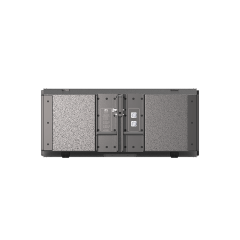When you are hiring professional speakers for live events there several factors to look at so your sound quality can be perfect and the audience will also get maximum satisfaction. The first thing that you would want to check out is the power output of your speakers. One charged event could use between 500 and 2,000 watts of power for speakers in a very large venue. A 500 watt system might be enough for a small indoor venue, but an outdoor festival could need one or several arrays of speakers with hundreds upon thousands of watts each to cover the space evenly.
The venue type also dictates the facilities available to you, and this can affect where or not these smaller speakers are enough for a full dance floor crowd. The former is generally applicable for very large venues and allows the loudspeaker to provide uniform sound output over long distances (Figure 5). They can handle high sound pressure levels (SPL), up to and beyond 130 dB; a requirement for ensuring the clean delivery of audible frequencies throughout all parts of a large space without breaking. On the other hand, point-source speakers may be better suited for smaller venues that need a sound system able to shoot out evenly across single area (which you do not have with these bigger arrays pointed at different angles).
Another important factor to look into when buying a set of professional speakers is the frequency response. Typically, a full-range speaker system reproduces sounds covering the entire audible spectrum—from approximately 20 Hz to 20 kHz—so it must do justice to both low and high frequencies. For example, an audio speaker having a frequency range of 40 Hz to 18 kHz might be suitable for general listening, but not enough where deep bass is required such as in most electronic dance music festivals; subwoofers are typically used in those settings.

This is also key especially our items can take a lot of abuse on the road. For professional usage in which you are required to take on and carry out your speaker frequently, these speakers should be sturdy with reinforced grilles or housings. Guillot said another thing to think about is the weight of speakers — some models weigh between 30 and 50 pounds, which are easier for crews consisting of two or three people.
The price for professional speakers varies greatly, but higher-end systems can end up costing more than $10k per unit. The upfront cost is substantial, but for many professionals the long-term benefits of increased sound quality and reliability outweighs its cost. ROI: By having better guests you will drive up your bookings and ratings… And revenue!
Take the JBL VTX series: it's these, super-powerful ultra-high-end professional line arrays that find themselves employed by touring professionals for their sheer horsepower and sonic transparency as well robust build quality. With power ratings to 2,000 watts and a wide range of frequency responses catering for all kinds of audio requirements these are suitable for live events series.
Speakers also need to be tested before buying, which is equally important. If everything else is the same, then listening to these speakers in a space that replicates their destination can be very enlightening. Consider how clear the sound is, balance of frequencies and if it can handle high volumes without warping.
Choosing the right professional speakers is a critical decision for event organizers and sound engineers as it determines how effective their live events are. Reviewing power output, frequency response, corrosion resistance and cost are all qualities that will help guide you in the right direction to choose what type of audio equipment is needed for your event.
